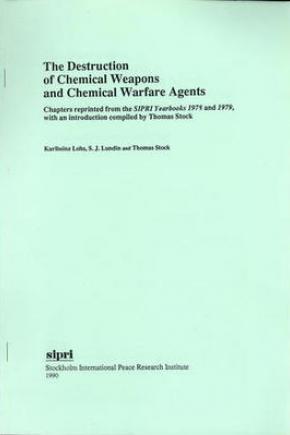The Destruction of Chemical Weapons and Chemical Warfare Agents
The bilateral agreement between the USA and the USSR, which was concluded at the Washington summit meeting in 1990, is a clear indication that a new era has begun in chemical disarmament. The United States and the Soviet Union have agreed to the destruction of their large chemical weapon stockpiles until both nations have reached a declared stockpile of 5000 tonnes by 2002. This commitment is a clear signal to all of the nations participating in the Geneva Conference on Disarmament: the time has come to conclude a comprehensive and global Chemical Weapons Convention (CWC) as quickly as possible. The destruction commitment which the parties to the CWC will assume poses great technical and environmental challenges. Not least among these is the challenge presented by the sheer extent of the huge stockpiles.
The two SIPRI Yearbook articles which are reprinted here are from the late 1970s and focus on various aspects of the destruction of chemical weapons. They have been supplemented by an introduction compiled by Dr Thomas Stock, which briefly assesses the current state of the question, the text of the bilateral agreement between the United States and the Soviet Union, and a bibliography of relevant publications.
1. Introduction
2. The destruction of chemical warfare agents
Karlheinz Lohs
3. Stockpiles of chemical weapons and their destruction
S. J. Lundin
4. Agreement between the United States of America and the Union of Soviet Socialist Republics on Destruction and Non-production of Chemical Weapons and on Measures to Facilitate the Multilateral Convention on Banning Chemical Weapons, 1990
5. Bibliography
Thomas Stock

